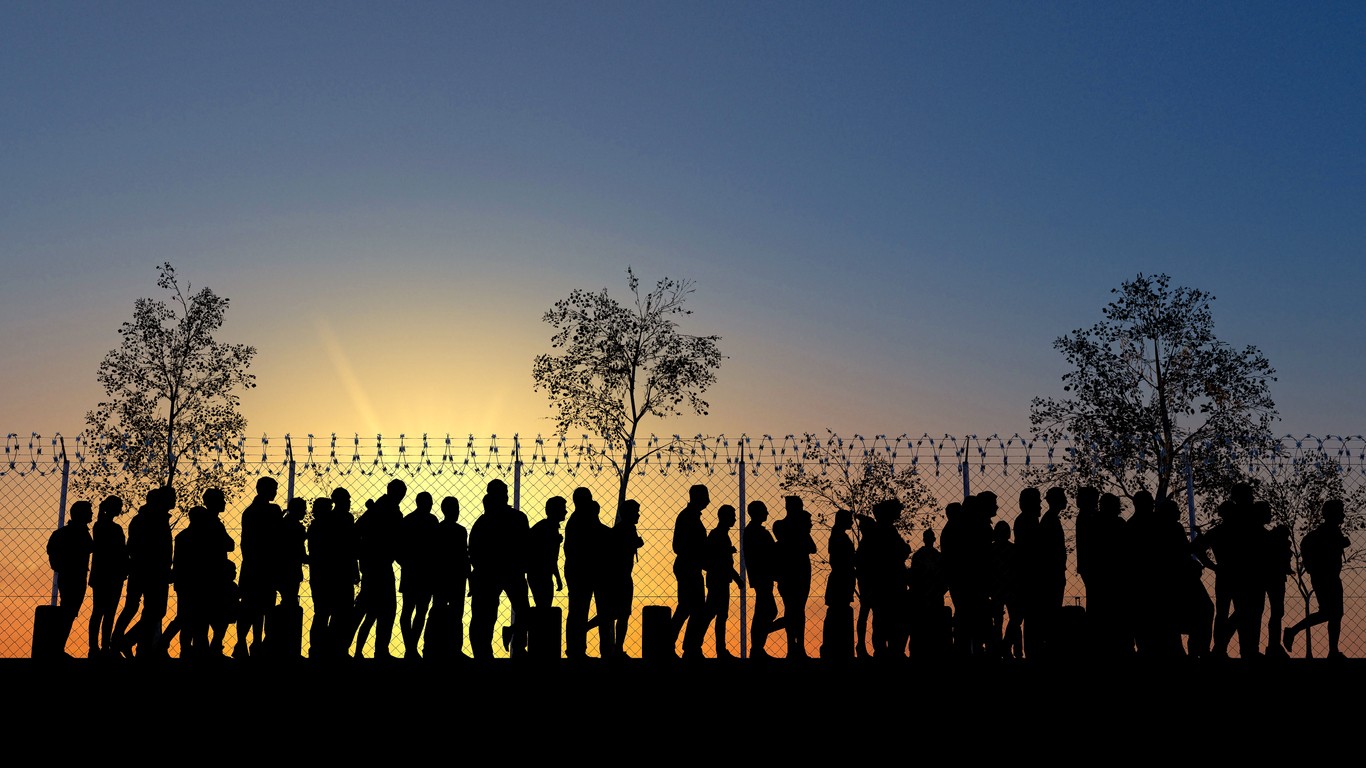October 12, 2023
Beyond Crisis Narratives: Solutions at the Border and Beyond
Senior Staff Attorney, Center for the Immigration Law and Policy at the UCLA School of Law

Early this year, I wrote about the urgent need for the Biden administration to confront its failures—and those of Republican-led states—on immigration policy. For months, Texas, Arizona, and even Florida had been busing and flying newcomers from the border to New York, Washington, D.C., and Chicago. In turn, receiving states and localities had already begun screaming calamity. And once more, newly arrived migrants had become political pawns: the federal government pointed to them to urge congressional reform; Republican-led states continued to call for a wholesale border closure; and Democrat-led localities pressed the need for more federal dollars.
Sadly, the spectacle has only intensified in recent months, to the detriment of our new neighbors and friends. Mayor Eric Adams has taken a page out of extremists’ playbooks to caution that newly arrived migrants will “destroy New York City,” and Illinois Governor J.B. Pritzker called the situation at the border “untenable” for Illinois while calling for more federal investments.
Those of us who live and work at the border know a lot about the “yes and” approach. Mayor Adams and Governor Pritzker are right that receiving communities need more federal dollars and other interventions like Temporary Protected Status designations. After all, the federal government is equipped with tools to respond to fluctuating needs at the border and beyond. And, in the absence of a whole-of-government approach and investment, localities need to govern by investing in humane reception and welcoming efforts in partnership with trusted nongovernmental organizations.
In San Diego, we already have a glimpse of what works. What was once an ad-hoc rapid response effort by local groups has become an exemplary infrastructure of local nongovernmental organizations, state government, and health partners that models how to receive newcomers with compassion. The San Diego Rapid Response Network Migrant Shelter provides humane respite sheltering for people released from border custody before they travel on to meet their loved ones throughout the country. Even in recent weeks, when the number of individuals processed and released has far exceeded existing shelter capacity, in part due to the scaling back of state resources, local groups have coalesced to welcome people in as dignified a manner as possible, while also continuing to call for meaningful investments from local government. The same is true in non-border cities too. In Los Angeles, the LA Welcome Collective has turned Texas Governor Abbot’s crisis narrative on its head by pooling local government and nongovernmental organizations’ resources to humanely receive some of the very buses Texas routinely sends in an effort to foment chaos in Los Angeles.
Beyond addressing the immediate humanitarian needs of newcomers at the border, broader solutions might seem elusive, as many elected officials will have us believe. But, once more, we already know what works.
Many who have consumed misleading narratives do not know that earlier this year, the Biden Administration implemented a program with the power to chip away at them. The Parole Pathways for people from Cuba, Haiti, Nicaragua, and Venezuela (CHNV Pathways), announced and implemented in January 2023, creates a safe pathway for up to 30,000 people per month from those four countries to seek advance permission to come the United States for up to two years. During that period, they are eligible for employment authorization. The program is modeled after Uniting for Ukraine, which created a similar (though numerically-uncapped) system for people fleeing Ukraine in the wake of Russia’s invasion.
In order to apply to the CHNV Pathways, individuals must have sworn financial sponsors in the United States and meet other eligibility requirements. They have drastically reduced the number of people from the included countries making the dangerous trek to the southern border, and it’s no wonder why: the CHNV Pathways have created powerful incentives for people to use them, and disincentives for other more risky options. At the same time, across the United States, families, churches, and business are eagerly raising their hands to sponsor people through the program. The CHNV Pathways demonstrate the will of communities across the country to welcome newcomers, which sits in stark contrast to the fear mongering advanced by some politicians charged with leading them.
But the CHNV Pathways are now in the crosshairs of one of the chief peddlers of crisis narratives: the state of Texas. In a pending lawsuit, Texas and 20 other Republican-led states are seeking to block the CHNV Pathways altogether, and thereby block one of the few programs that, by nearly all measures, works. Together with attorneys from Justice Action Center and RAICES, I represent seven courageous program sponsors who embody its immense benefits and are fighting back against Texas’s attempt to end the program for the whole country. But they remain in jeopardy due to Texas’s lawsuit. This summer, we went to trial in the case, Texas v. DHS, No. 6-23-cv-7, and are awaiting a decision that will determine the fate of at least 1.5 million people waiting for their opportunity to sponsor their global neighbors.
The success of the CHNV Pathways—and the perils of ending them—are reminders that so long as instability exists abroad, no policies, no matter how punitive, will keep people from coming to our doorstep in search of safety, stability, and family reunification. What is within our control is what the process will look like. Do we want safe and systematic pathways to the interior of the country, or dangerous treks, confusing apps, and harsh penalties at the border? Respite sheltering, travel coordination, and work permits to stabilize newcomers; or rhetoric that vilifies and further marginalizes people who need a helping hand to get on their feet?
The more states/localities advance crisis narratives instead of investing in solutions, the easier we make it for Texas et al. to hold good immigration and border policy hostage for the whole country. Border communities—and other communities across the country—know what it means to celebrate newcomers while calling for more permanent investments. It’s past time for leaders on both sides of the aisle to take note.
 Monika Y. Langarica is a senior staff attorney with the Center for the Immigration Law and Policy at the UCLA School of Law where she focuses on litigation, policy advocacy, and strategic communications related to asylum and border policy.
Monika Y. Langarica is a senior staff attorney with the Center for the Immigration Law and Policy at the UCLA School of Law where she focuses on litigation, policy advocacy, and strategic communications related to asylum and border policy.




